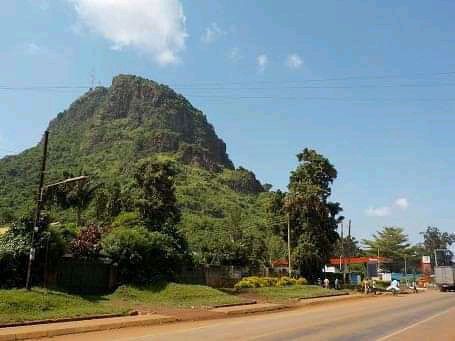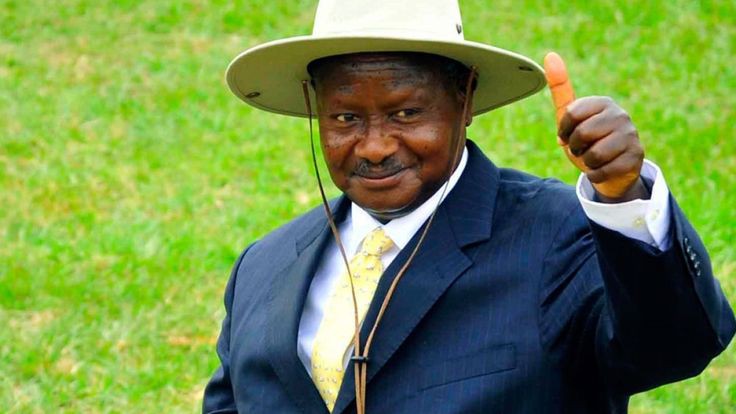When did President Museveni agree to curve out 3 districts from Tororo and how does Tororo City come about?
On April 23, 2025, President Yoweri Museveni approved a sweeping administrative overhaul of Greater Tororo: three new districts—Mukuju, Mulanda, and an unnamed unit—have been carved out, and Tororo Municipality has been elevated to city status. The announcement marks a significant milestone in a decades-long journey marred by ethnic tension, political power struggles, and administrative disputes. But it is also a story of eventual consensus, resilience, and the desire for inclusive development.

This transformation didn’t happen overnight. It is the result of years of dialogue, confrontation, and painful historical baggage.
When did residents start demanding to divide the district?
The seeds of Tororo’s divide were sown as far back as the colonial period, when British administrative boundaries unintentionally—or perhaps strategically—fostered friction between the Iteso and Japadhola communities. The ethnic fault line became more entrenched post-independence, especially as national politics began to take shape along ethnic and regional lines.
For decades, Tororo County (predominantly Iteso) and West Budama (predominantly Japadhola) have engaged in a tug-of-war over political representation, resource allocation, and even symbolic power—none more emblematic than Tororo Municipality itself, which both communities laid claim to.
One of the most vivid episodes of the conflict came in 2005 when an Itesot man ate a live rat before President Museveni during a rally in Mukuju. The dramatic act was meant to highlight the community’s desperation for administrative autonomy. It worked, partially. The president promised a new district for the County, but follow-through stalled amid disagreements, particularly over the boundaries and naming.
How did the municipality finally become Tororo City?
The conflict recently took a more constructive turn. In a high-level meeting convened on April 22, 2025—just a day before the official announcement—leaders from both Tororo County and West Budama agreed to elevate Tororo Municipality to a city, using its current boundaries. The meeting, presided over by Vice President Jessica Alupo, was a breakthrough moment.
“The government cannot sustain the burden of too many administrative units at once,” VP Alupo explained. “We propose a city for Tororo Municipality, one district for Tororo County, and another for West Budama.”
Her statement was both practical and firm, citing fiscal constraints while leaving the door open for future divisions as needed.
MP Sarah Opendi endorsed the move and suggested neutral or compound names for the districts, like Tororo-Mukuju and Kisoko-Mukuju, to avoid further confrontation over legacy names.
Jacob Oboth Oboth, the Minister of Defense and Veteran Affairs, offered a sobering reminder:
“There is no way a new administrative unit can go with the old name. This is not about ego; it’s about moving forward.”
Former MPs and other political stakeholders echoed similar sentiments, with some pointing to precedents in Soroti and Mbale, where city status was granted without reigniting divisive debates over names.
The London Report and the Role of Peace Dialogues
The current restructuring aligns with recommendations in the London Report, a document whose findings were instrumental in determining the administrative future of the district. The report emphasized equitable representation, de-escalation of ethnic rivalries, and improved governance.
This was not the only peacebuilding initiative. In November 2023, cultural leaders from both communities—including the Tieng Adhola and Iteso traditional institutions—met in Tororo to foster reconciliation. It was the first time such a meeting had taken place at the Tieng Adhola palace, underscoring its symbolic significance.
These dialogues culminated in resolutions that paved the way for the current compromise. As Vice President Alupo noted during an earlier burial event, “coexistence, dialogue, and collaboration” are essential if Tororo is to harness its full potential.
Breaking Down the New Administrative Structure
The newly created administrative units are as follows:
- Tororo City: Carved from the existing municipality, with its current boundaries retained. Its elevation is both symbolic and practical, aimed at fostering urban development.
- Mukuju District: Comprising Tororo County North and South. This district has already been gazetted and is awaiting operationalization.
- Mulanda District: Encompasses West Budama South and Central.
- Unnamed District: Formed from West Budama North and North-East. A final name is yet to be agreed upon, pending further dialogue.
These changes bring hopes of more tailored service delivery, improved infrastructure development, and, perhaps most importantly, reduced ethnic animosity through autonomy and local governance.
Remaining Disagreements and the Road Ahead
Despite progress, challenges remain. The biggest sticking point now is over the use of the name “Tororo District.” Both Tororo County and West Budama argue for the right to retain the name, citing historical, emotional, and political justifications.
Tanga Odoi, a key stakeholder in the process, recommended finalizing city status first before engaging in what he termed the “more emotional” naming issues. It was a strategic suggestion, aiming to isolate productive consensus from potential political derailment.
What do these changes mean nationally?
The creation of new districts and the elevation of Tororo to city status marks the beginning of a new administrative era, but it also reflects a community attempting to write a more harmonious chapter after years of division.
While many hurdles remain—especially around identity, naming, and resource distribution—the willingness of leaders to compromise, dialogue, and build bridges offers hope.
The Tororo of tomorrow may finally become a model of how multi-ethnic communities can navigate painful histories and construct a shared future, not through forced coexistence, but through deliberate inclusion and mutual respect.
Only time will tell whether this vision becomes reality. But for now, the people of Tororo can begin to breathe a little easier, knowing that the future is finally taking shape—on their own terms.
Museveni Explains the Break-Up of Tororo
President Yoweri Museveni has defended the government’s decision to split Greater Tororo into three new districts and a city, describing the move as a necessary step toward reducing ethnic tensions and improving service delivery for both the Japadhola (Badama) and Iteso communities.
Speaking during a high-level peace-building meeting at State House Entebbe—attended by Vice President Jessica Alupo, cabinet ministers, members of parliament, cultural and religious leaders, district councillors, and LC III chairpersons—Museveni said the restructuring, long delayed due to local disagreements, had now been agreed upon in principle.
Will Tororo become a neutral city?
“We have agreed Tororo becomes a neutral city, and we create three new districts—Mukuju, Mulanda, and a third whose name must be neutral,” the President announced. “Some people want to call it Tororo, but we are saying no—go and get a neutral name.”
Museveni urged leaders to resolve naming disputes through quiet, constructive dialogue, warning against allowing symbolic disagreements to derail the broader goal of unity and progress.
“You don’t have to fight. Discuss among yourselves quietly,” he said. “But it’s not correct to say you’re going to die over a name.”
According to the agreed plan, the Iteso community will retain Mukuju—which is considered uncontested—and will also be represented within the newly declared Tororo City. The Japadhola will receive Mulanda and the third district, whose name is still under consultation.
Why was Tororo divided?
Museveni described the arrangement as a balanced compromise, noting it mirrors similar setups elsewhere in the country. “The Japadhola get two new districts, and the Iteso get a district and a city. Just like Mbale has Mbale District and Mbale City, Tororo can also have a district and a neutral city,” he said.
The President criticised the longstanding ethnic wrangling over administrative boundaries and land ownership, calling it counterproductive to development efforts.
“You people are really wasting time for your people,” he said. “What’s crucial is bringing services nearer. That’s why we broke up larger districts like Bukedi, which once covered Pallisa and Busia.”
He reminded leaders that decentralisation was intended to enhance governance and improve livelihoods—not to entrench ethnic divisions. Reflecting on his upbringing as a Mulokole (born-again Christian), Museveni invoked scripture to caution against trivial disputes over land and identity.
“We used to say: ‘They left undone what they ought to have done, and they did what they ought not to have done, and there is no truth in them.’ That is what you have been doing,” he said.
He further quoted the Bible, citing Abraham’s decision to separate peacefully from his herdsmen: “Even if you had said the whole of Tororo Town goes to the Bateso, so what? What matters is service, not ownership.”
Museveni emphasised that the government’s focus remains on economic development and social cohesion—not on reinforcing ethnic claims.
What about the unnamed district?
“We should not get stuck on the name Tororo. What matters most is wealth creation, not the name itself,” he stressed.
In closing, the President praised the cooperative spirit shown during the meeting and urged leaders to complete their consultations and relay final decisions through Vice President Alupo.
“This place is home to both communities,” he said. “Let’s focus on the future, not the past.”





2 Comments
Kigoziiiiiiiiiiiiiiiiiiiiiiii
Tororo City
Hehe